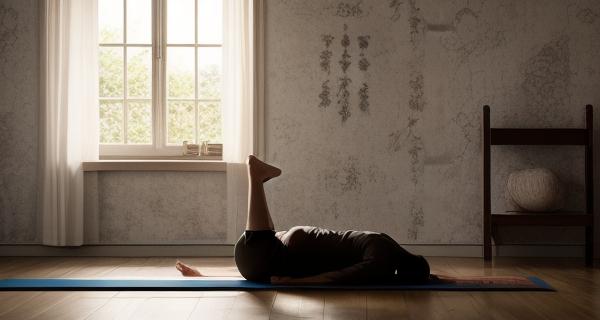Yoga Origins
Yoga Origins
Journeying back millennia, yoga’s roots stretch deep into ancient India, predating formalized practice by potentially 5,000 years. While the exact origins are shrouded in history, evidence suggests early yogic practices emerged from the Indus-Sarasvati civilization, with depictions of figures performing postures found on seals and artwork. These early practices were intertwined with religious rituals and philosophical concepts, forming the bedrock of what we know as yoga today.
The term “yoga” itself appears in the Vedas, ancient Sanskrit scriptures, indicating a focus on uniting the individual self with the universal consciousness. Early yoga wasn’t solely about physical postures; it encompassed ethical principles (yamas and niyamas), breath control (pranayama), and meditation – a holistic approach to well-being.
The development of distinct schools of yoga occurred over centuries, notably Hatha yoga, which emphasizes physical postures (asanas) and breathing techniques. Hatha yoga, as documented in texts like the Hatha Yoga Pradipika, became the foundation for many modern yoga styles.
From its spiritual beginnings, yoga gradually evolved, spreading across Asia and eventually reaching the West in the late 19th and early 20th centuries. This adaptation saw a shift towards physical fitness and stress reduction, while still retaining its core philosophical principles. Understanding these origins provides a richer appreciation for the profound depth and enduring relevance of yoga in today’s world.
Yoga Principles
## Yoga Principles
Yoga, meaning “union” in Sanskrit, is far more than just stretching. It’s a deeply profound practice with roots stretching back over 5,000 years, offering a pathway to holistic well-being. At its core lie fundamental principles that guide both the asana (postures) and the off-mat practice.
**Ashtanga Yoga**, a widely practiced lineage, outlines key principles. **Yamas** are ethical restraints – non-violence (ahimsa), truthfulness (satya), non-stealing (asteya), continence (brahmacharya), and non-possessiveness (aparigraha). These encourage mindful living and respect for oneself and others. **Niyamas** are observances – purity (saucha), contentment (santosha), discipline (tapas), self-study (svadhyaya), and surrender to a higher power (ishvara pranidhana). They cultivate inner strength and self-awareness.
Beyond the Yamas and Niyamas, several core principles underpin the practice. **Asana** isn’t just about physical poses; it’s about cultivating stability, strength, and flexibility – both physically and mentally. **Pranayama** focuses on breath control, harnessing vital energy (prana) to calm the nervous system and enhance mental clarity. **Drishti**, or focused gaze, cultivates concentration and steadiness.
Ultimately, yoga aims to unite the mind, body, and spirit. By embracing these principles, practitioners cultivate inner peace, reduce stress, improve physical health, and foster a deeper connection to themselves and the world around them. It’s a journey of self-discovery, not just a workout.
Yoga Benefits
## Yoga Benefits
Yoga, a practice deeply rooted in ancient Indian philosophy, has evolved into a global phenomenon. But beyond the trendy poses, lies a powerful system for holistic well-being. Understanding yoga’s origins, core principles, and wide-ranging benefits can unlock a transformative path to a healthier, happier you.
The word “yoga” itself means “union” – a union of mind, body, and spirit. Originating thousands of years ago, yoga wasn’t initially about physical exercise. It was a spiritual discipline aimed at self-realization. Key to this practice are the eight limbs outlined in the Yoga Sutras of Patanjali, encompassing ethical conduct, physical postures (asanas), breathwork (pranayama), and meditation.
The benefits of yoga are remarkably diverse. Physically, it improves flexibility, strength, and balance. Regular practice can alleviate chronic pain, enhance cardiovascular health, and boost immunity. But the advantages extend far beyond the physical.
Yoga significantly reduces stress and anxiety by calming the nervous system. Mindfulness techniques incorporated into yoga cultivate self-awareness and emotional regulation. Improved focus and concentration are common outcomes, benefiting both personal and professional life.
Whether you’re a seasoned practitioner or a curious beginner, exploring yoga offers a pathway to inner peace, physical vitality, and a deeper connection to yourself. From gentle restorative flows to dynamic vinyasa sequences, there’s a style of yoga to suit every body and every need. Discover the transformative power of yoga and embark on a journey towards a more balanced and fulfilling life.
Exploring Yoga
Yoga: Exploring Origins, Principles, and Benefits
Exploring Yoga
Yoga, a practice deeply rooted in ancient Indian philosophy, has evolved into a global phenomenon. But what exactly *is* yoga, and why has it resonated with millions across cultures and generations? Let’s delve into its origins, core principles, and the profound benefits it offers.
The word “yoga” itself means “union” – the union of mind, body, and spirit. Its origins trace back over 5,000 years, with early texts appearing in the Vedas and Upanishads. Initially a spiritual discipline, yoga gradually integrated physical postures (asanas), breathing techniques (pranayama), and meditation.
At its heart, yoga operates on a set of core principles. These include ethical conduct (yamas and niyamas), self-discipline, and the cultivation of inner peace. Asanas aren’t just about flexibility; they’re designed to build strength, improve balance, and increase body awareness. Pranayama regulates the breath, calming the nervous system and enhancing mental clarity. Meditation cultivates mindfulness and promotes emotional stability.
The benefits of yoga are far-reaching. Physically, it can alleviate back pain, improve cardiovascular health, and increase energy levels. Mentally, yoga reduces stress, anxiety, and depression, fostering a sense of well-being. It enhances focus, improves sleep, and promotes emotional resilience.
Whether you’re seeking physical fitness, mental clarity, or spiritual growth, yoga offers a holistic path to a healthier, more balanced life. It’s a journey of self-discovery, accessible to all, regardless of age, fitness level, or background. Explore the diverse styles – from gentle restorative yoga to dynamic vinyasa – and find the practice that resonates with you.
